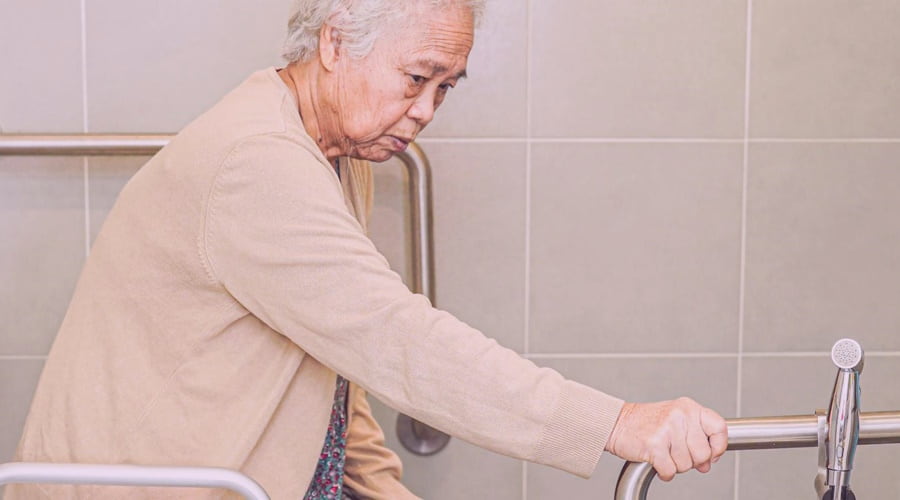How Can I Make My Home Safer for Someone Receiving Home Care?
Ensuring a safe environment for someone receiving home care is paramount. A secure and hazard-free home not only enhances the quality of care but also promotes independence and confidence for the care recipient.
This guide provides comprehensive strategies to make your home safer, addressing potential hazards and implementing practical solutions.

Room-by-Room Home Safety Checklist
Living Room and Bedroom
- Remove Trip Hazards: Ensure pathways are clear of clutter, electrical cords, and area rugs. Use non-slip pads for rugs to prevent slipping.
- Furniture Arrangement: Arrange furniture to create wide pathways for easy navigation, especially for those using mobility aids like walkers or wheelchairs.
- Grab Bars: Install grab bars near the bed and in sitting areas to provide support when getting up or sitting down.
- Lighting: Ensure adequate lighting, including night lights, to prevent trips and falls. Consider motion-sensor lights for added convenience.
- Secure Carpets: Use carpet tape or non-slip mats to keep carpets securely in place and prevent edges from curling.
Bathroom
- Non-Slip Mats: Place non-slip mats in the shower, bathtub, and on the bathroom floor.
- Grab Bars: Install grab bars in the shower, next to the toilet, and near the bathtub for added support.
- Shower Chair: Use a shower chair to provide a safe seating option while bathing.
- Raised Toilet Seat: Consider a raised toilet seat to make sitting and standing easier.
- Handheld Shower Head: Install a handheld shower head for better control and ease of use.
Kitchen
- Fire Hazards: Ensure all appliances are in good working condition and regularly maintained. Keep a fire extinguisher easily accessible.
- Easy Access: Store frequently used items in lower cabinets or shelves to avoid the need for step stools or reaching.
- Stove Safety: Use stove knob covers and ensure that the stove area is clear of flammable items.
- Slip-Resistant Flooring: Use slip-resistant mats in areas that may get wet, such as near the sink.
- Proper Ventilation: Ensure proper ventilation to avoid the buildup of cooking fumes and reduce the risk of carbon monoxide poisoning.
Hallways and Staircases
- Clear Pathways: Keep hallways free of clutter and obstacles.
- Stair Railings: Ensure sturdy railings are installed on both sides of the staircase.
- Non-Slip Treads: Apply non-slip treads to stairs to prevent slipping.
- Adequate Lighting: Install bright lighting in hallways and staircases to ensure clear visibility.
General Home Safety Tips
Fire Safety
- Smoke Detectors: Install smoke detectors on every floor and test them regularly to ensure they are working properly.
- Fire Extinguishers: Keep fire extinguishers accessible in key areas like the kitchen and near bedrooms.
- Escape Plan: Develop and practice an emergency escape plan with all household members.
Electrical Safety
- Electrical Cords: Keep electrical cords out of walkways and secured to prevent tripping.
- Overloaded Outlets: Avoid overloading electrical outlets and use surge protectors where necessary.
- Regular Inspections: Have a professional inspect the home’s electrical system to ensure it is up to code and safe.
Medication Safety
- Organized Storage: Store medications in a safe, organized manner, preferably in a locked cabinet.
- Medication Management: Use a medication organizer or dispenser to keep track of dosages and schedules.
- Clear Labels: Ensure all medication containers are clearly labeled with the name, dosage, and instructions.
Enhancing Mobility and Accessibility
Mobility Aids
- Walkers and Canes: Ensure mobility aids are in good condition and appropriately sized for the user.
- Wheelchair Access: Modify doorways and install ramps to accommodate wheelchairs.
- Lift Chairs: Consider using lift chairs to assist with sitting and standing.
Assistive Devices
- Reachers and Grabbers: Use reachers or grabbers to avoid bending or stretching for items.
- Automatic Door Openers: Install automatic door openers for easy access to frequently used doors.
- Adjustable Beds: Use adjustable beds to provide better support and comfort.
Involving Care Services
Professional Home Care
Engage professional home care services to provide support and ensure the safety of your loved one. Home care providers can offer personalized care plans, regular assessments, and assistance with daily activities.
Regular Assessments
Schedule regular safety assessments with a professional to identify and address potential hazards. These assessments can help ensure that the home environment remains safe and conducive to the care recipient’s needs.
Family Involvement
Involve family members in maintaining a safe home environment. Regularly communicate with caregivers and family members to address any concerns and make necessary adjustments.
Service Areas
All American Home Care proudly serves multiple locations across Pennsylvania, ensuring high-quality home care services are accessible to those in need. Our service areas include:
Making a home safer for someone receiving home care involves a combination of practical modifications, regular assessments, and proactive communication.
By addressing potential hazards, enhancing mobility, and ensuring proper infection control, you can create a secure environment that promotes independence and well-being for the care recipient.
At All American Home Care Agencies, we are dedicated to providing exceptional home care services across Pennsylvania, helping families achieve peace of mind and enhancing the quality of life for their loved ones.
Additional Resources:




